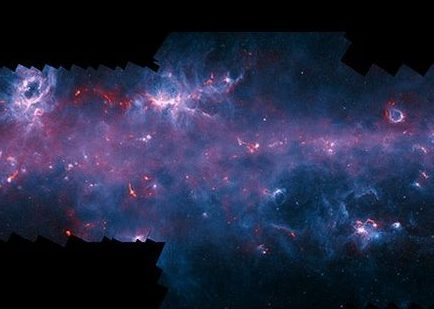
Supervisor: Dr James Urquhart
This project will utilise a number of cutting edge molecular line surveys to map the Galaxy-wide distribution of molecular material and link this to the larger scale structural features of the Milky Way, such as the spiral arms and central Galactic bar. These observations will provide a detailed picture of the distribution and dynamics of the molecular gas on scales of whole giant molecular cloud (GMCs) complexes (>100s pc) down to the scales of dense clumps (~1 pc), which is the fundamental star-forming unit. Combining these results with detailed studies of the star forming properties of dense clumps will provide a physical link between star formation taking place on parsec scales and the large-scale dynamics of the Milky Way (kpc scales). This will be used to investigate the role spiral arms play in the formation of GMCs and in the star formation processes, which ultimately drives galactic evolution.
The distances to even to the most nearby galaxies limit extragalactic studies to looking at the large-scale structures such as the spiral arms and whole GMCs (~30-100 parsecs) and so they are unable to investigate the underlying physical processes that regulate star formation. Detailed studies of the connection between the large-scale structures and star formation found in our Galaxy, therefore, also holds the key to a deeper understanding of the fundamental processes by which galaxies convert their molecular material into stars. We will apply the detailed picture of the Milky Way derived to nearby galaxies to obtain a better understanding of their properties and evolution.
For enquires about this project please contact Dr James Urquhart.